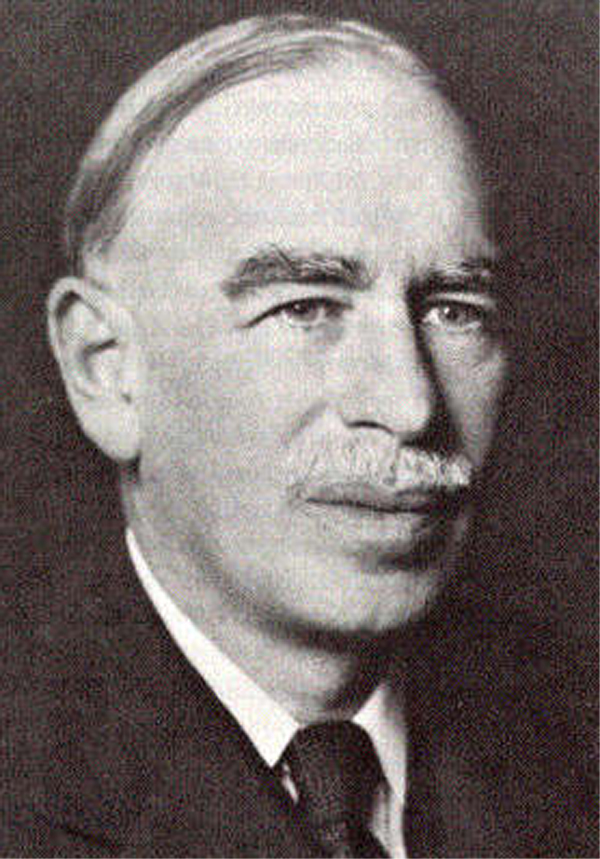By Joseph E. Stiglitz
NEW YORK – We are all Keynesians now. Even the right in the United States has joined the Keynesian camp with unbridled enthusiasm and on a scale that at one time would have been truly unimaginable.

For those of us who claimed some connection to the Keynesian tradition, this is a moment of triumph, after having been left in the wilderness, almost shunned, for more than three decades. At one level, what is happening now is a triumph of reason and evidence over ideology and interests.
Economic theory had long explained why unfettered markets were not self-correcting, why regulation was needed, why there was an important role for government to play in the economy. But many, especially people working in the financial markets, pushed a type of “market fundamentalism.” The misguided policies that resulted – pushed by, among others, some members of US President-elect Barack Obama’s economic team – had earlier inflicted enormous costs on developing countries. The moment of enlightenment came only when those policies also began inflicting costs on the US and other advanced industrial countries.
Keynes argued not only that markets are not self-correcting, but that in a severe downturn, monetary policy was likely to be ineffective. Fiscal policy was required. But not all fiscal policies are equivalent. In America today, with an overhang of household debt and high uncertainty, tax cuts are likely to be ineffective (as they were in Japan in the 1990s). Much, if not most, of last February’s US tax cut went into savings.
With the huge debt left behind by the Bush administration, the US should be especially motivated to get the largest possible stimulation from each dollar spent. The legacy of underinvestment in technology and infrastructure, especially of the green kind, and the growing divide between the rich and the poor, requires congruence between short-run spending and a long-term vision.
That necessitates restructuring both tax and expenditure programmes. Lowering taxes on the poor and raising unemployment benefits while simultaneously increasing taxes on the rich can stimulate the economy, reduce the deficit, and reduce inequality. Cutting expenditures on the Iraq war and increasing expenditures on education can simultaneously increase output in the short and long run and reduce the deficit.
Keynes was worried about a liquidity trap – the inability of monetary authorities to induce an increase in the supply of credit in order to raise the level of economic activity. US Federal Reserve Chairman Ben Bernanke has tried hard to avoid having the blame fall on the Fed for deepening this downturn in the way that it is blamed for the Great Depression, famously associated with a contraction of the money supply and the collapse of banks.
And yet one should read history and theory carefully: preserving financial institutions is not an end in itself, but a means to an end. It is the flow of credit that is important, and the reason that the failure of banks during the Great Depression was important is that they were involved in determining creditworthiness; they were the repositories of information necessary for the maintenance of the flow of credit.
But America’s financial system has changed dramatically since the 1930s. Many of America’s big banks moved out of the “lending” business and into the “moving business.” They focused on buying assets, repackaging them, and selling them, while establishing a record of incompetence in assessing risk and screening for creditworthiness. Hundreds of billions have been spent to preserve these dysfunctional institutions. Nothing has been done even to address their perverse incentive structures, which encourage short-sighted behaviour and excessive risk taking. With private rewards so markedly different from social returns, it is no surprise that the pursuit of self-interest (greed) led to such socially destructive consequences. Not even the interests of their own shareholders have been served well.
Meanwhile, too little is being done to help banks that actually do what banks are supposed to do – lend money and assess creditworthiness.
The Federal government has assumed trillions of dollars of liabilities and risks. In rescuing the financial system, no less than in fiscal policy, we need to worry about the “bang for the buck.” Otherwise, the deficit – which has doubled in eight years – will soar even more.
In September, there was talk that the government would get back its money, with interest. As the bailout has ballooned, it is increasingly clear that this was merely another example of financial markets mis-appraising risk – just as they have done consistently in recent years. The terms of the Bernanke-Paulson bailouts were disadvantageous to taxpayers, and yet remarkably, despite their size, have done little to rekindle lending.
The neo-liberal push for deregulation served some interests well. Financial markets did well through capital market liberalization. Enabling America to sell its risky financial products and engage in speculation all over the world may have served its firms well, even if they imposed large costs on others.
Today, the risk is that the new Keynesian doctrines will be used and abused to serve some of the same interests. Have those who pushed deregulation ten years ago learned their lesson? Or will they simply push for cosmetic reforms – the minimum required to justify the mega-trillion dollar bailouts? Has there been a change of heart, or only a change in strategy? After all, in today’s context, the pursuit of Keynesian policies looks even more profitable than the pursuit of market fundamentalism!
Ten years ago, at the time of the Asian financial crisis, there was much discussion of the need to reform the global financial architecture. Little was done. It is imperative that we not just respond adequately to the current crisis, but that we undertake the long-run reforms that will be necessary if we are to create a more stable, more prosperous, and equitable global economy.
Copyright: Project Syndicate, 2008.
www.project-syndicate.org

